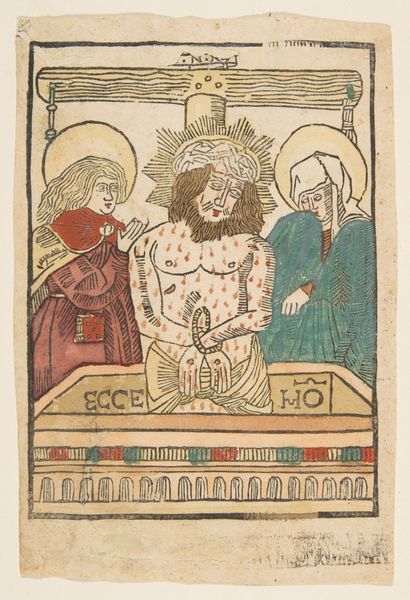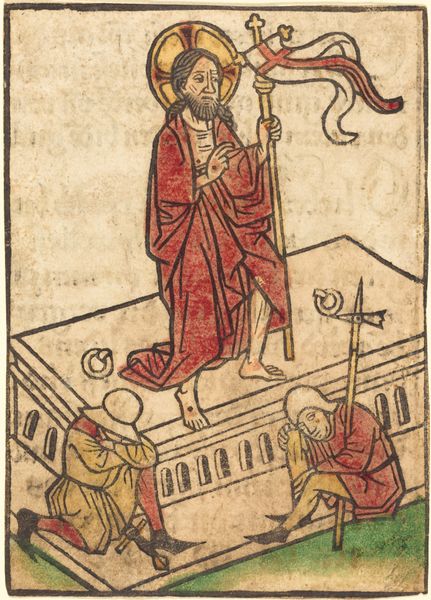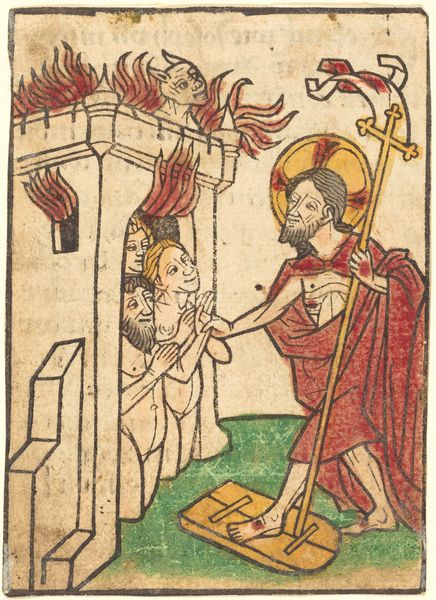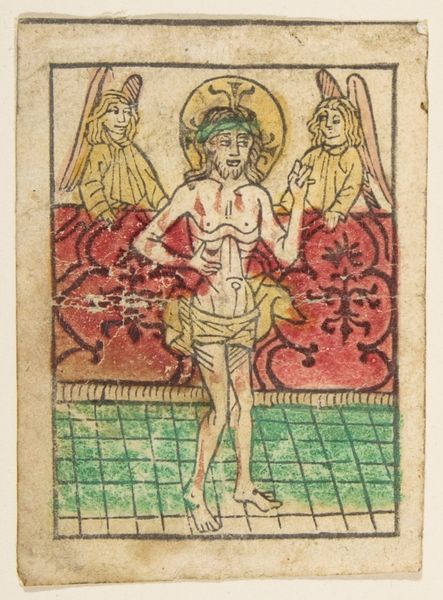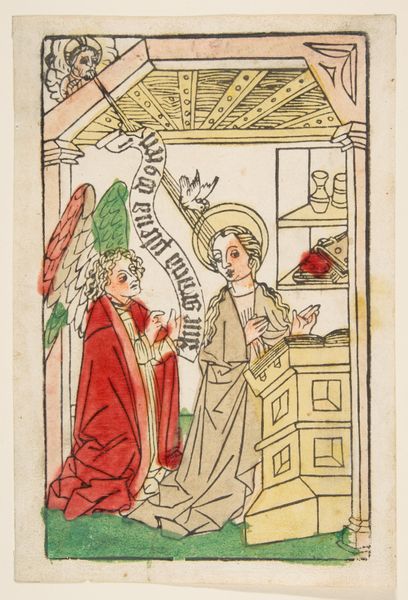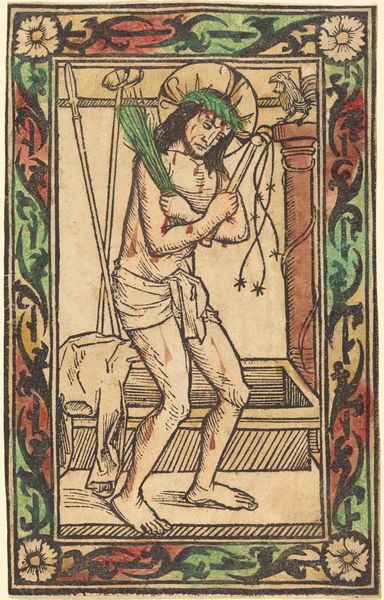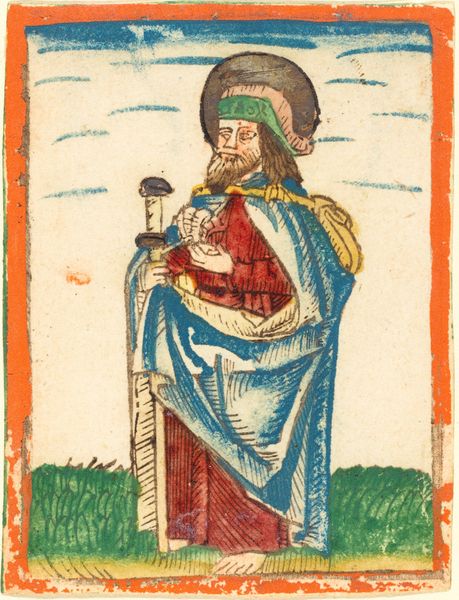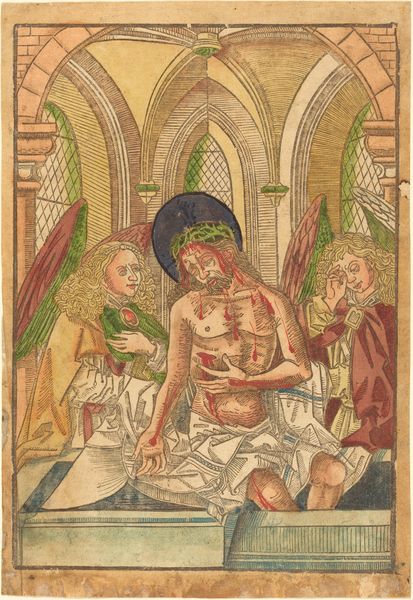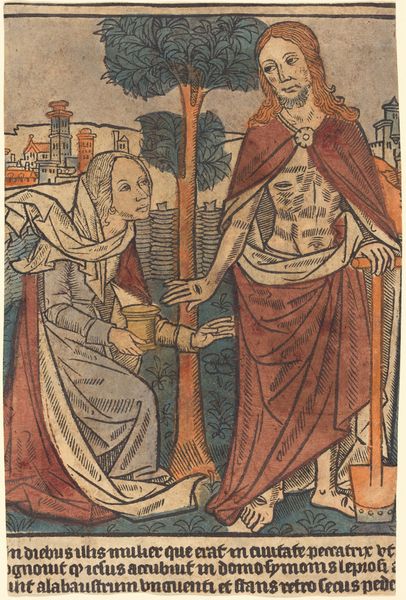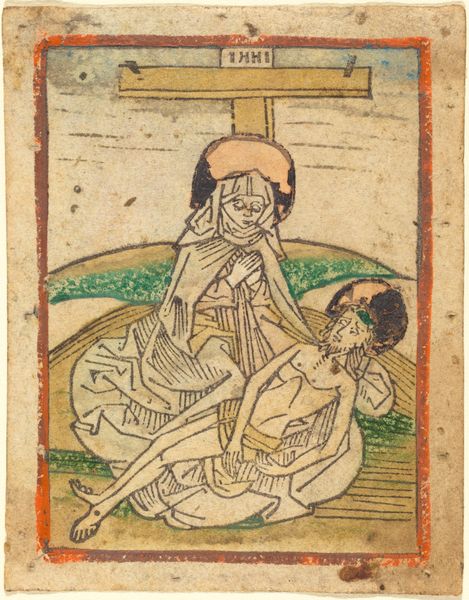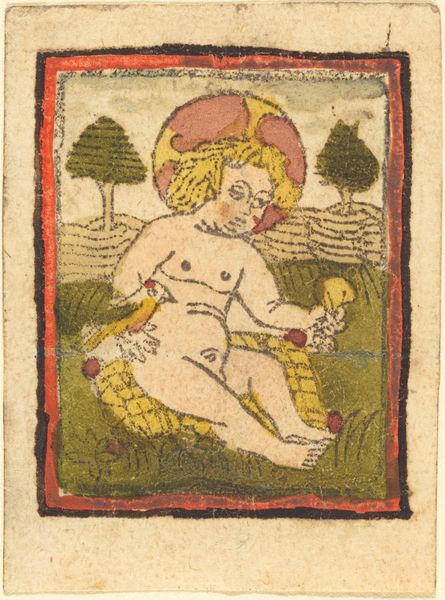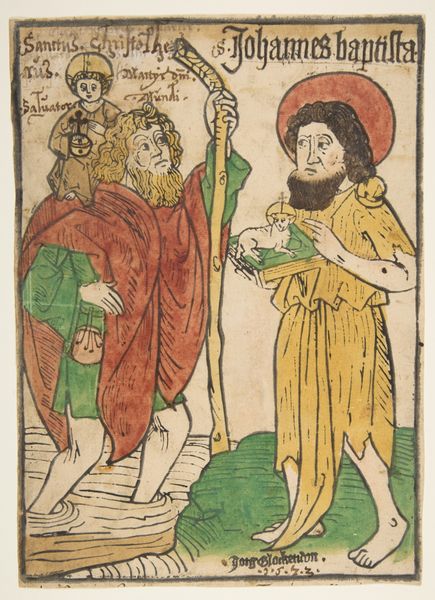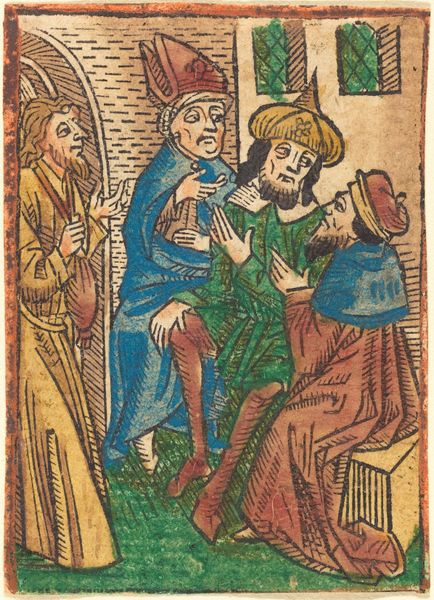
tempera, print
#
portrait
#
medieval
#
narrative-art
#
tempera
# print
#
figuration
#
momento-mori
#
history-painting
#
italian-renaissance
#
miniature
Copyright: National Gallery of Art: CC0 1.0
Curator: Oh, what an evocative piece. It’s this tender yet raw portrayal of sorrow. Editor: It's intriguing—there's almost a deliberate banality in the drawing. Very graphic in a child-like manner. Curator: Indeed. We are looking at a work from sometime between 1430 and 1440, known as "Christ as the Man of Sorrows". It's an anonymous piece, rendered with tempera on what appears to be a print substrate. Editor: Tempera? That lends itself to the flatness—makes you really notice the ground. The layering must have been so controlled and delicate. Is it paper? How does that influence its meaning as a devotional object versus, say, if it were an altarpiece panel? Curator: It’s like a whisper of pain made material, wouldn’t you agree? The fragility almost emphasizes the vulnerability of Christ. Look at how his wounds are depicted; it is brutal, yet the composition holds a meditative quality. And these instruments of torture… what do they evoke for you? Editor: Instruments. Yes. Clearly didactic – meant to teach a certain story, reinforce social scripts. I’m also wondering what kind of workshop this came out of – were these prints mass-produced? How would the economics of devotional images shape how people related to faith, or grief? Curator: You are drawing attention to the heart of the piece: its intention, and that it could touch people in an intimate and transformative way. In it is the pain but it’s not merely sensational, you feel. It urges us towards empathy, reflection and perhaps that’s its own kind of power. The beauty, though severe, has to somehow open hearts, open minds…don’t you think? Editor: Yes, precisely because its dissemination changes the equation, it's fascinating. If mass-produced, there is almost no limit on those opened minds, or at least approached by these images of both beauty and pain, that both shock and create a devotional mood at once. I want to know more about that printer’s hand! Curator: Absolutely. Seeing the piece through your lens reminds me that every brushstroke, every choice of material, whispers something about its historical and cultural roots. Thank you for adding layers to what this artwork means and provokes. Editor: My pleasure! Every artifact deserves scrutiny and reflection, that its making be as highlighted as it's inherent affect.
Comments
No comments
Be the first to comment and join the conversation on the ultimate creative platform.
